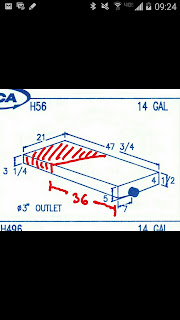But we need to put the "cylon" cabinet back in the bulk head.
David took it down to work on the window, remove old insulation, and repair/clean the clearance lights. He's also working on the wiring plan for the solar array, shore power, circuits etc.
That cylon takes a up a lot of space, and it is hard to constantly work around when it's in the middle of the floor.
It feels like several things are happening simultaneously out there. Yet this seems like a good time to talk about the insulation.
Old insulation is pretty dry overall, yet some areas were completely ruined by mice. Fiberglass bats are always going to be mouse hotels, and while I don't dislike mice, I don't want them living in my walls and floors. The mouse urine smell was strong when we brought the Avion home.
So all of the original insulation is out. Makes it easier and cleaner to redo every single thing in the camper, and just feels better knowing all the yuck is out.
Regarding insulation: There is a lot of info, and a lot of strong opinions out there on this topic. We looked at everything from spray-in foam to fiberglass bats to rigid insulation to a combination of these things.
David was already in the insulation mind-set prior to starting the Avion project. He recently built a small walk-in cooler for hanging wild game at our house (inside his shop). Because of climate change.
The goals for the Avion insulation are:good R value, insect/mouse resistant, easy to work with and install. Sidenote: For a good R value, you need air gap. since the walls are only 1.5 inches thick, there can only be so much air gap!
We went with Prodex insulation. (For another discussion of Prodex insulation in campers, go to Frank's Trailer Works Blog.
We are doing 2 layers of this: one against the outer skin, then an air gap that also accommodates wiring, and then another layer of Prodex.
The Prodex comes in a big roll and is really easy to work with. We measured the dimensions of the various bays in the camper walls, measured and cut corresponding pieces in our warm living room (Winston helped), and them taped them into place in the camper.
Verdict: easy to work with, not mouse friendly, and the pets love it:






































